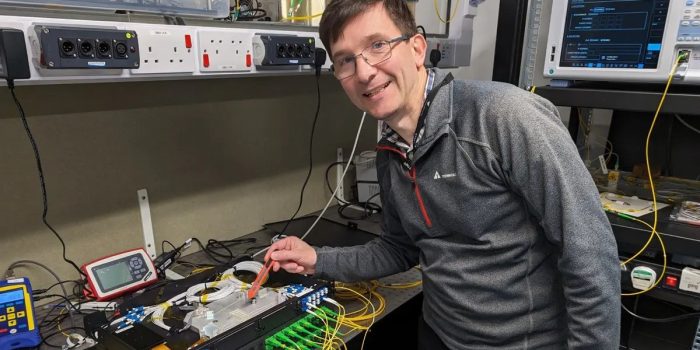In a groundbreaking achievement, researchers at Aston University have pushed the boundaries of data transmission speeds, reaching a staggering 4.5 million times faster than average home broadband. This monumental breakthrough, achieved through an international collaboration, saw data being transferred at an unprecedented rate of 301 terabits per second, utilizing new wavelength bands in fiber optic systems previously untapped.
Led by Professor Wladek Forysiak and Dr. Ian Phillips of Aston Institute of Photonic Technologies, alongside partners from the National Institute of Information and Communications Technology in Japan and Nokia Bell Labs in the U.S., the team demonstrated the capability of a single standard optical fiber to handle such immense data loads. This feat eclipses the average broadband speed by a monumental margin, which stood at just 69.4 Mbit/s according to Ofcom’s report in 2023.
The key to this achievement lies in the exploitation of new wavelength bands within the optical fiber spectrum. By accessing additional spectral bands such as the E-band and S-band, alongside the conventional C and L-bands, the researchers developed specialized optical amplifiers and processors to harness these previously unused channels efficiently.

Dr. Phillips emphasized the significance of their optical processor in managing data transmission across these bands. The utilization of the E-band, which is approximately three times wider than the C-band, represents a novel approach that significantly boosts transmission capacity.
He explained, “Broadly speaking, data was sent via an optical fiber like a home or office internet connection. However, alongside the commercially available C and L-bands, we used two additional spectral bands called E-band and S-band. Such bands traditionally haven’t been required because the C- and L-bands could deliver the required capacity to meet consumer needs.”
“Over the last few years Aston University has been developing optical amplifiers that operate in the E-band, which sits adjacent to the C-band in the electromagnetic spectrum but is about three times wider. Before the development of our device, no one had been able to properly emulate the E-band channels in a controlled way,” Phillips added.
The implications of this breakthrough extend far beyond mere speed records. By enhancing transmission capacity within the backbone network, the technology promises vastly improved connections for end-users. Moreover, by maximizing the utilization of the existing fiber network, the approach presents a greener alternative to deploying new infrastructure, thus prolonging its commercial value and reducing environmental impact.
Published by the Institute of Engineering and Technology and presented at the European Conference on Optical Communication, this achievement sets a new benchmark for future research endeavors. As society’s appetite for data continues to grow, innovations like these will play a pivotal role in meeting burgeoning demands while also paving the way for a sustainable digital future.

Professor Forysiak added, “By increasing transmission capacity in the backbone network, our experiment could lead to vastly improved connections for end users. This groundbreaking accomplishment highlights the crucial role of advancing optical fiber technology in revolutionizing communication networks for faster and more reliable data transmission.”
“Growing system capacity by using more of the available spectrum—not just the conventional C-band but also other bands such as the L, S, and now E-bands can help to keep the cost of providing this bandwidth down. It is also a ‘greener solution’ than deploying more, newer fibers and cables since it makes greater use of the existing deployed fiber network, increasing its capacity to carry data and prolonging its useful life & commercial value.”
The successful transmission of data at such unprecedented speeds underscores the transformative potential of optical fiber technology. Through collaborative efforts and groundbreaking research, the Aston University team has not only shattered speed barriers but also charted a course towards a more connected, efficient, and environmentally conscious digital landscape.


